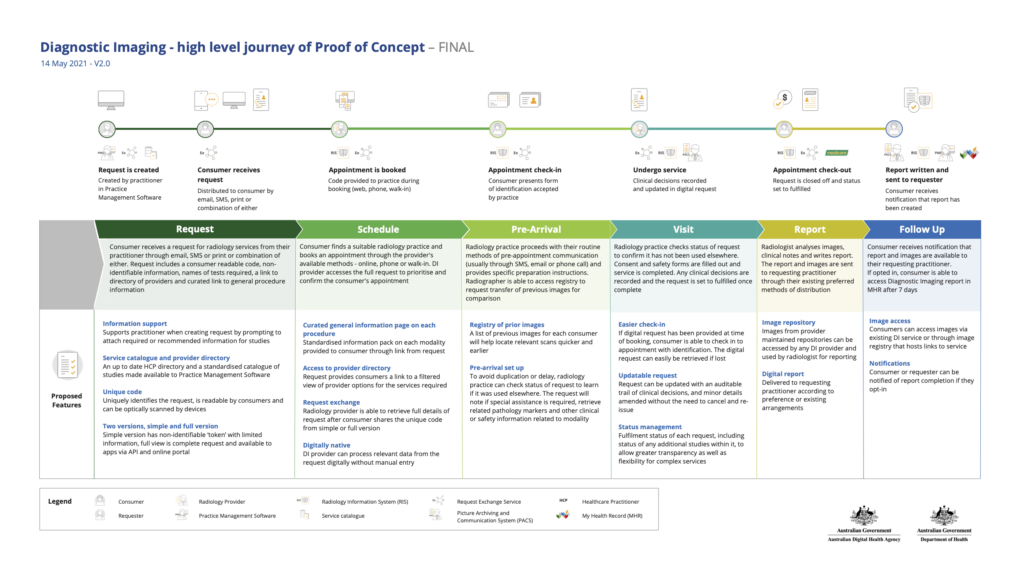Designing a Safer, More Efficient Digital Referral System
Client: Department of Health (via ADHA)
Role: Lead Experience Designer, Service Designer
Project: eRequests in Diagnostic Imaging – Discovery and Proof of Concept
Overview
The referral and booking process for diagnostic imaging in Australia is still largely paper-based, prone to inefficiencies, duplication, and errors. I led the design discovery and co-design of a future-state experience for digital imaging requests – culminating in a validated, research-driven proof of concept that received ministerial support for development.

Artefacts used as stimulus in interviews to bring the concept journey to life
The Challenge
- Disjointed, analogue systems across the health sector
- Heavy reliance on patients to deliver and explain referral details
- Low visibility for clinicians, high risk of data loss or errors
- Fragmented and non-standardised technical ecosystems

My Role
- Led co-design with clinicians, consumers, providers, and peak bodies
- Mapped current-state workflows and pain points
- Developed and tested the future-state journey and minimal data set
- Designed artefacts to simulate digital referral scenarios
- Facilitated stakeholder alignment across government and industry
Design Approach
Strategy
- User Value: Choice, convenience, clarity – delivered digitally
- System Efficiency: Fewer errors, less admin, faster bookings
- Feasibility: Built around existing systems, with optional paper fallback
Phases
- Discovery: Site visits, interviews, and desktop research across the sector
- Co-Design: Created concepts with users and validated via journey walkthroughs
- Proof of Concept: Developed tested artefacts and defined a minimal data set
- Stakeholder Testing: Two rounds of testing with 36 participants from across HCP, consumer and diagnostic imaging provider groups

Prototypes of the proposed PoC were provided during the interviews for feedback
Key Outcomes
- A validated, multi-stakeholder proof of concept for digital imaging requests
- Defined a national minimal data set and user-centred technical architecture
- Designed with accessibility, equity, and consent in mind
- Won support for next-stage funding and development
- Created a flexible model ready to scale to pathology and other domains

Challenges Overcome
- Digital readiness gaps across demographics and technology systems
- Balancing paper coexistence with future-state ambitions
- Clinical safety and compliance amidst complex workflows
- Stakeholder alignment across industry, policy, and service delivery

Reflection
Designing a national-scale solution for diagnostic imaging referrals required orchestration across systems, people, and policy. This project exemplifies the power of design thinking in government health, not only as a research process but as a bridge between service intent and viable delivery.
Related pages
Reframing My Health Record: An accessible prize winning app design
Web app to native MVP: Translating browser to iOS/Android
